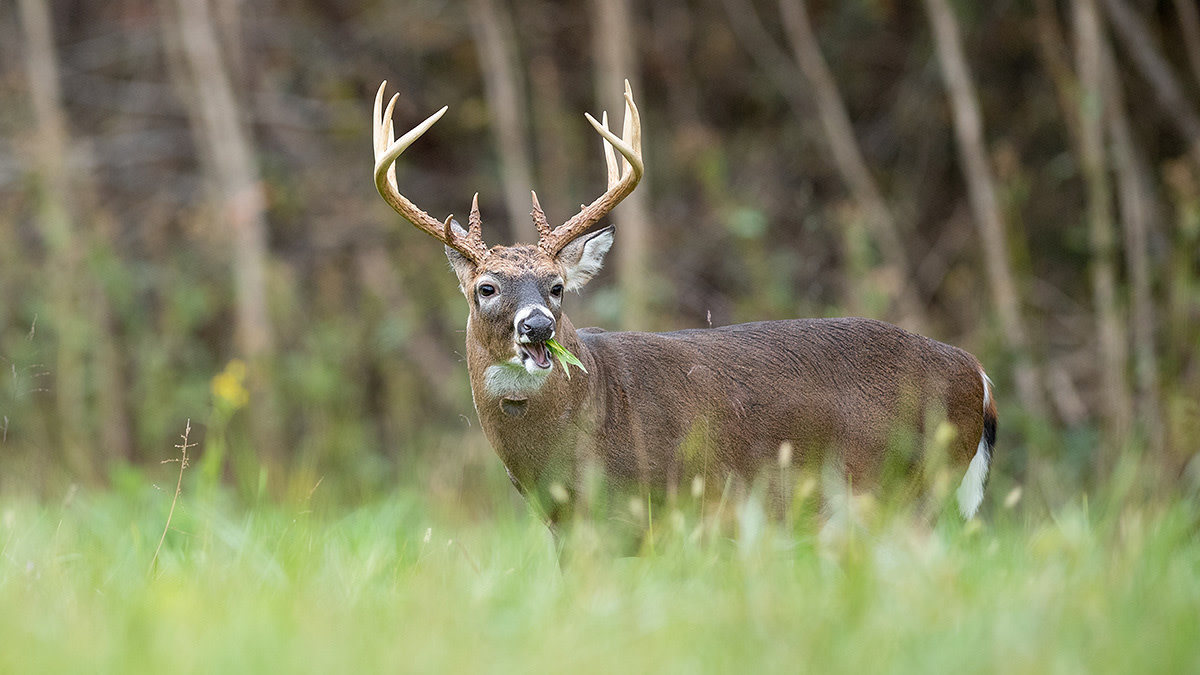
Summer is the time to grind and prepare food plots for the season ahead. Most hunters and land managers know the power of sweat equity.
Permanent deer stand sites can become stale if not set up efficiently or adjusted over time. Whitetails relax during the offseason but promptly shift back into their intense survival mode once hunters start hitting the woods for fall openers.
From collecting and submitting soil samples to choosing the perfect time to bury seed in the ground, hunters log hard hours establishing food plots. Seed and fertilizer costs have skyrocketed this year at an all time high. Therefore, you should do everything in your power to maximize the huntability and productivity of each stand location.
Access
Your entry and escape strategy may be the most crucial element to a productive food plot. First, ask yourself where the deer will come from. If you don’t know, it’s time to back up and identify major bedding sites. This is another reason to consistently create and maintain thickets for deer at specific locations. In other words, put them exactly where you want them. It's impractical to lay out a permanent food source stand without first knowing where deer bed and how they utilize your farm.
A stealthy departure from the stand at last light is just as important as the evening approach. More than likely, when you leave at dark, there will be deer all around you on the walk from the stand to your truck. They may not make a sound but they will watch you depart and learn your movement patterns along the way. A walking path that avoids the field is essential to keep a site fresh and lessen the pressure. If a hunter blows out deer every time they walk to and from the stand, it will spot burn the field rapidly. Whitetails will immediately adapt and alter their arrival time until after legal hunting hours when humans aren’t present.
Cover
Over the last decasde, edge feathering has become more popular in the food plot world. The Kentucky Department of Fish & Wildlife Resources defines edge feathering as "a gradual transition from one habitat type to another over a horizontal distance." This habitat feature is commonly missing from the landscape today. Human fragmentation of land has significantly altered natural wildlife environments. Hard-edged field borders offer nothing for game species. A sharp transition of timber to a low-lying food plot will often deter daylight movement. Deer need to feel safe and know they can fully disappear within a couple bounds. Create edge feathering with a chainsaw. A tractor harrow can also help by disturbing the native seed bank.
If you're looking to design transition zones through plantings, you should consider incorporating screening cover as a resourceful tactic to blend high quality food options with concealment. Hybrid sorghum, Egyptian wheat, and sunn hemp are all killer to plant as cover screens. Corn is often planted as screening cover, but it's very demanding of your soil because it drains nutrients and minerals. Additionally, the ears are usually eaten before the season opener.
Leaving at Dusk
There is always the gamble of bumping deer as you leave at sundown. Occasionally, it’s better to leave before the last minutes of daylight. Especially, if you feel more deer will pile in right when it’s too late to shoot.
Trust your gut to feel out when deer will appear and when is the ideal time to vanish. I’d rather slip out undetected a little early than potentially compromise a stand that I’ve put so much blood, sweat, and tears into creating. It’s a tough call to make but on a destination site, I’d rather bow out early than risk educating more deer.
Stand Setup
It’s helpful if your stand can be permanent just because mobile setups take a good amount of time to build and tear down. Departure after evening sits should be expedited as every second counts.
Stands should be buried into the perimeter tree line, not stick out like a sore thumb from the field. It should take a hunter a minute to spot it while walking into view. I like to position stands at least two or three trees from the edge on larger fields and even further away for smaller plots.
The exit route should leave directly from the stand and take you to the closest trail or road rather than force you to walk through the entire plot. Make sure to incorporate a cover screen to protect yourself from being seen from the field. By implementing this method, it’s possible to sneak out and not spook deer from the food plot.
Lastly, don’t field dress in or around food plots. I know this is common in some areas of the country, but leaving a gut pile buffet for all downwind predators is not a wise idea if your goal is to attract prey species into the food plot.
If the field is planted, then a vehicle can be driven to it. Take the time to drag the deer out and load it up. If you must field dress, do it on one side of the property and not around permanent or mobile stand locations. You want to kill deer here next year, right?
Feature image via Matt Hansen.







Conversation